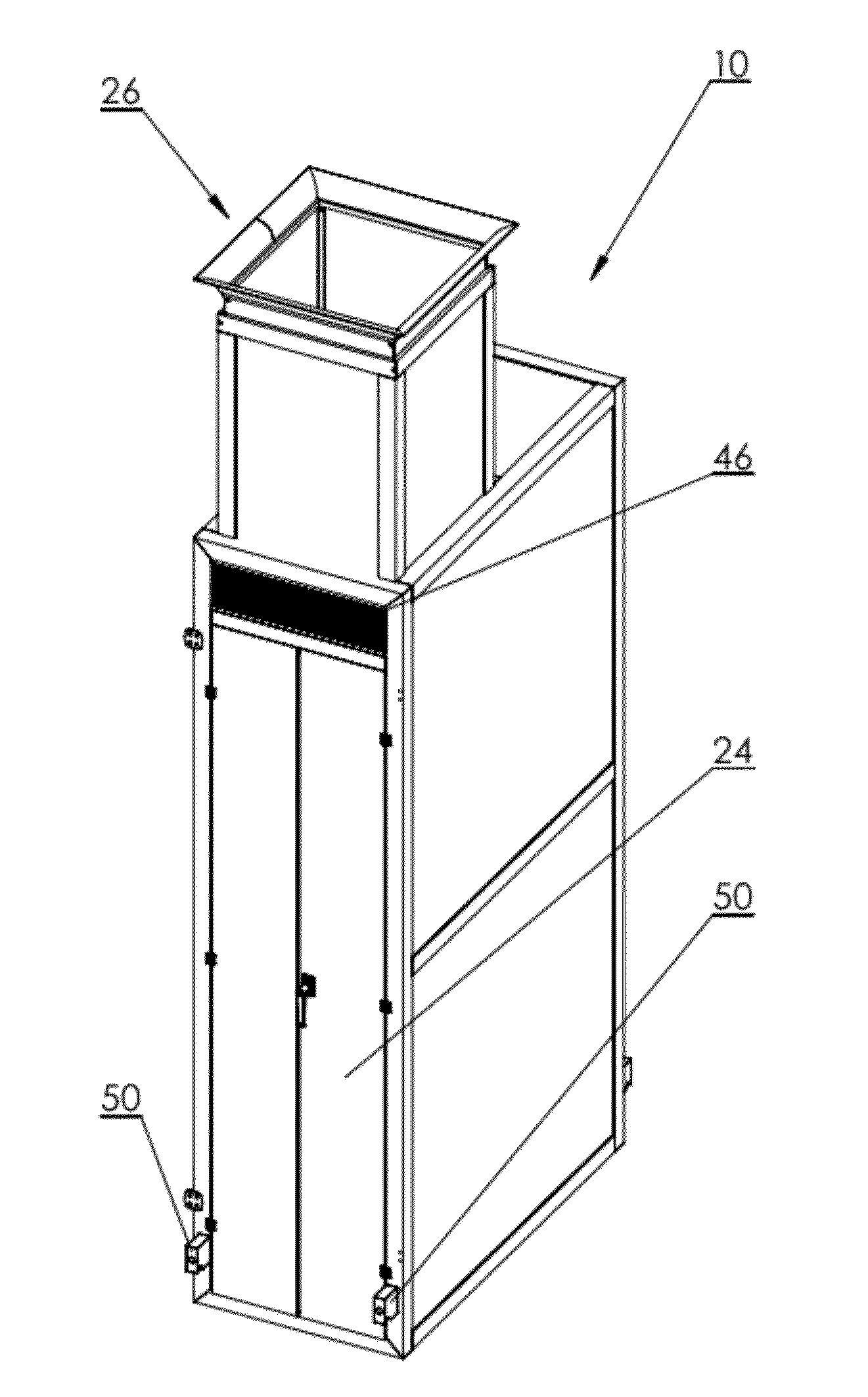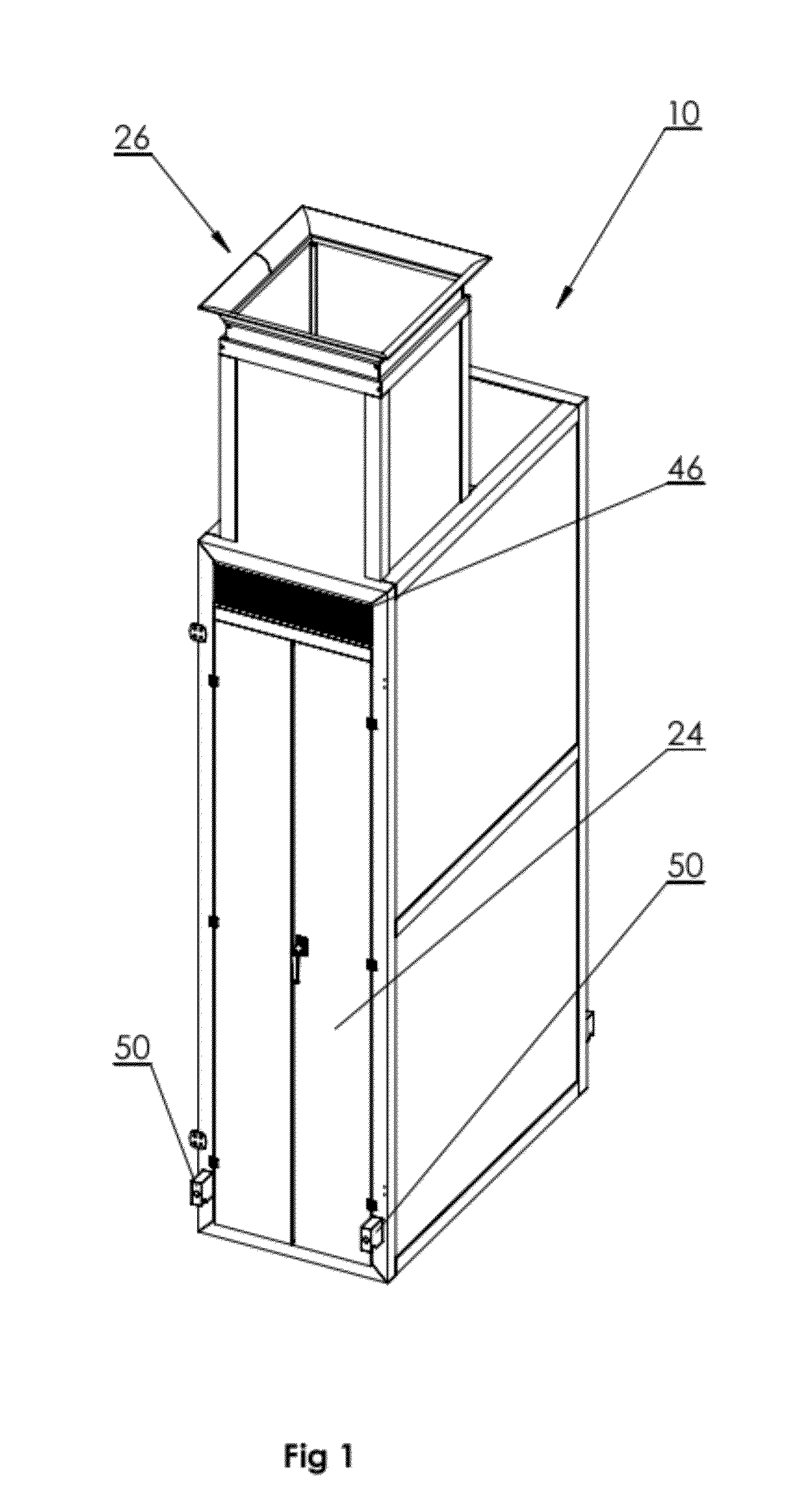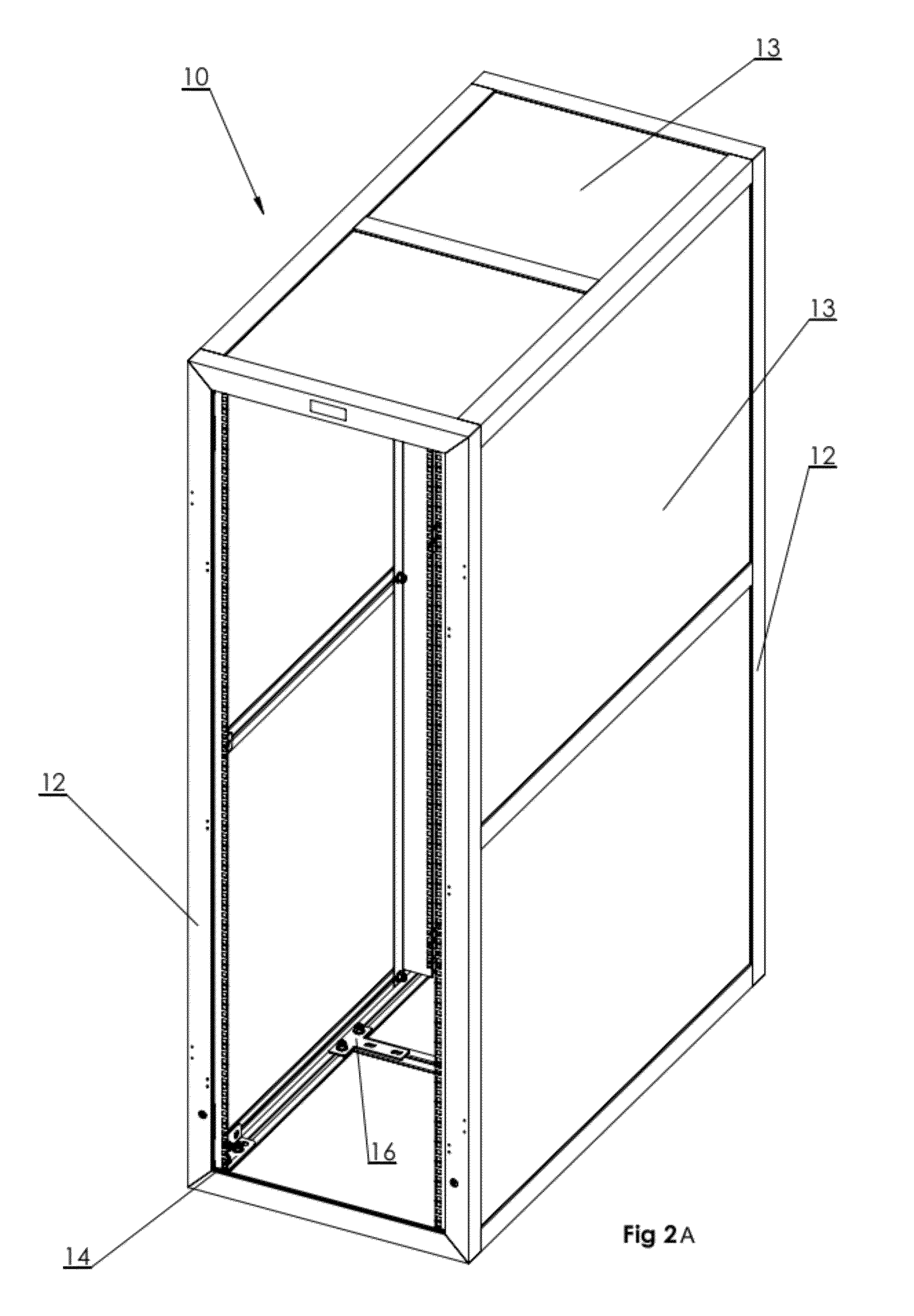Assemblable server cabinet
a server cabinet and server technology, applied in the field of rack cabinets, can solve the problems of inability to disassemble fully welded structures for shipping, the construction of such large enclosures is often plagued, and the heat generated by the thousands of watts that are often fed into and thus dispersed within the confines of the enclosure,
- Summary
- Abstract
- Description
- Claims
- Application Information
AI Technical Summary
Benefits of technology
Problems solved by technology
Method used
Image
Examples
Embodiment Construction
[0012]An embodiment of the present invention relates to a server cabinet which includes extruded frame members that have a plurality of groves within which heads of fasteners are slidably disposable; and corner brackets having holes through which the head of a fastener can pass, at least two of the holes at least substantially aligning with at least one of the plurality of groves of the frame members when at least an end portion of at least two extruded members are positioned onto the corner brackets.
[0013]Optionally, the extruded frame members can include a plurality of members that are formed from at least one extruded shape. In one embodiment, at least some of the plurality holes in the corner brackets have a non-circular shape. Optionally, at least some of the plurality of holes of the corner brackets can include a shape through which a head of a fastener can pass but through which the fastener cannot be removed after it is partially rotated.
[0014]The server cabinet can include ...
PUM
 Login to View More
Login to View More Abstract
Description
Claims
Application Information
 Login to View More
Login to View More - R&D
- Intellectual Property
- Life Sciences
- Materials
- Tech Scout
- Unparalleled Data Quality
- Higher Quality Content
- 60% Fewer Hallucinations
Browse by: Latest US Patents, China's latest patents, Technical Efficacy Thesaurus, Application Domain, Technology Topic, Popular Technical Reports.
© 2025 PatSnap. All rights reserved.Legal|Privacy policy|Modern Slavery Act Transparency Statement|Sitemap|About US| Contact US: help@patsnap.com



